-
Content count
818 -
Joined
-
Last visited
-
Days Won
6
Posts posted by prier
-
-
Nah sorry I can't send to WA or TAS. And spare seed? hahahaha, it's mine! all mine! well, unless you buy the plants ;)
-
-
-
Update: All Lophophora have sold, I have a few more I will post up in the next few days.
Woolunda Monster Pedro also sold but I can take small cuttings if anyone else is interested in that plant :D -
-
-
Yes it is a very fast growing, fat, semi monstrose pachanoi. I got this plant from a garden in the Northern Rivers region of NSW, it was imported in the late 80s/early 90s by a friend of a friend. It hasn't been propped much yet and very few people have it.
as far as monstrosity, It regularly gains and loses ribs as well as branching from the growth tips. It also has a habit of shooting four ribbed stems for the "cactus of the four winds" people ;) -
I've been growing plants for years, you may have caught me as half of the Cactus Orgy stall at EGA events. I recently started selling plants in my local area as well. I'm looking into starting a website but in the meantime I want to get the hang of the ol' mail order system. So I've picked out a few bits and pieces to sell an mail away to far away places. Although I can't send stuff to WA or TAS, sorry.
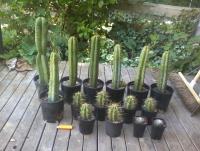
1x T. pachanoi "Woolunda Monster Pedro" $50 SOLD
2x T. pachanoi "Yowie" $30 each
3x T. bridgesii "Psycho0" $30 each
1x T. bridgesii "Dawson" $306x T. terscheckii hybrid seedlings (5 years old) $15 each
2x L. williamsii (slightly damaged, 6 years old) $50 each SOLD
+$ postage and handling
All plants have been grown in their pots for minimum of 18 months and will be sent bare rooted
I will have orders packed and sent within a week of receiving payment.
PM me if you have any more questions or to place an order
Cheers
:D-
 2
2
-
-
Thanks for the love guys. If anyone wants to share this with there social media networks, that would be greatly appreciated
-
Room available now! $652pcm + leccy + Internet
Musk Vale. 5 mins to Daylesford. 25 mins to Ballan. Over an hour to Melbourne depending on where you need to be.
Country living, wood fires, nice large communal spaces, studio room. Massive garden, it's basically a mini arboretum.
Established vege gardens, room for chooks, gets a bit frosty but.
Sharing with one male mid twenties, driven horticulturist/musician/event manager.
send an e-mail to peri dot jeffery at gmail dot com -
-
Cheers cobber
That particular planter was an award winning piece constructor by a former employee. One of my inspirations in horticulture.
Just to let you guys know, I'll be taking a bunch of interesting trichos, lophs and other assorted goodies. Things we don't ordinarily stock :D-
 1
1
-
-
Hey guys,
The CactusMan at Queen Vic Market in Melbourne is going overseas for a few weeks.
I'll be taking over the stall while he is gone, It'd be great to see some old faces and meet some new onesWe have a great range of "interesting" Cacti and Mesembs and I know a lot about these plants if you need any grow tips.
-
 1
1
-
-
patience, its an opuntia, nothing will kill it
-
lennys are well different, warassi is less common, more heavily spined than mags, para grew a bunch of warassis a while ago, but that's defs a mag
-
pretty sure its a terscheckii as it's from Hamiltons and seed grown. not many aussie growers are growing candicans from seed. plenty of pasa and terscheck seed about.
-
 1
1
-
-
Grow them all under the same conditions for three years then get back to us.
-
 1
1
-
-
Dunno if anyone has posted this before, thought it might be of interest to some who don't have BRITTON & ROSE
Trichocereus pachanoi sp nov. (Britton & Rose 1920)Plants tall, 3 to 6 meters high, with numerous strict branches, slightly glaucous when young, darkgreen in age; ribs 6 to 8, broad at base, obtuse, with a deep horizontal depression above theareole; spines often wanting, when present few, 3 to 7, unequal, the longest 1 to 2 cm. long, darkyellow to brown; flowerbuds pointed; flowers very large, 19 to 23 cm. long, borne near the top ofbranches, nightblooming, very fragrant ; outer perianthsegments brownish red; inner perianthsegments oblong, white; filaments long, weak, greenish; style greenish below, white above;stigmalobes linear, yellowish; ovary covered with black curled hairs; axils of scales on flowertubeand fruit bearing long black hairs.Collected by J. N. Rose, A. Pachano, and George Rose at Cuenca, Ecuador, September 17 to24, 1918 (No. 22806, type).This species is widely cultivated throughout the Andean region of Ecuador, where it is grownboth as an ornamental and as a hedge plant. In some of the lateral valleys on the western slopeof the Andes it appears to be native, as for instance above Alausi, but as it has doubtless longbeen cultivated it is impossible to be sure of its natural habitat.It is known to the Ecuadoreans as aguacolla or giganton and has been passing in Ecuadorunder the names of Cereus peruvianus and Cereus giganteus. It is named for Professor AbelardoPachano of the Quinta Normal at Ambato, Ecuador, who accompanied Dr. Rose in 1918 on histravels in the high Andes of Ecuador.This species belongs to the high Andes, ranging from 2,000 to 3,000 meters in altitude. In theChanchan Valley it certainly comes down to about 2,000 meters and overlaps the upper range ofLemaireocereus godingianus, which difers from it greatly in habit and fowers. Diferent as the twoplants are, Richard Spruce, keen botanist as he was, confused them, as the following quotationwill show; the part in italics refers to the Lemaireocereus: “The brown hillsides began to bediversified by an arborescent Cactus, with polygonal stems and white dahlialike flowers, which,Briareuslike, threw wide into the air its hundred rude arms. Lower down, at about 6,000 feet, Isaw specimens full 30 feet high and 18 inches in diameter.”Trichocereus peruvianus sp. nov. (Britton & Rose 1920)Plant 2 to 4 meters high with numerous erect or ascending, stout branches, 15 to 20 cm. indiameter, glaucous when young; ribs 6 to 8, broad and rounded; areoles large, 2 to 2.5 cm. apart,brownfelted; spines brown from the first, about 10, unequal, some of them 4 cm. long, rigid andstout, not at all swollen at base; areoles on ovary and flowertube hairy; mature flowers not seenbut evidently large and probably white.Collected by Dr. and Mrs. Rose near Matucana, Peru, altitude 2,100 meters, July 9, 1914 (No.18658).This species resembles T. bridgesii but has stouter and darker spines. It is found on the westernslopes of the Andes at a much lower altitude than that species.
I would like but don't have the original descriptions for macrogonus and bridgesii, these are both in a book by SALM-DYCK (1850) in Gordon Rowley's personal collection.-
 7
7
-
-
This is a great example of the amount of detail people should be putting in when asking for a Tricho ID. good work
-
My guess would be that it is Cactus babioides maybe?
-
 2
2
-
-
It's either that or a T. pasacana, they're both damn sexy regardless.
-
 1
1
-
-
Katu, on the subject of variegation. I have a plant that shot a sparsely variegated branch. I cut it off a few years ago and have been growing it on. All the new growth came out normal, so I recently cut the plant again just at the top of the variegated section. Hopefully some nice variegated branches next spring. Not really photo worthy just yet.
Curious this was brought up as this is the only San Pedro clone I've watched shoot a variegated branch. -
awwww, they're just little babies
-
I have a rough idea of what they might be. the files names are rough guesses ;) curious if anyone has clone names for the first three and the last i really have no idea, haven't seen it flower yet.


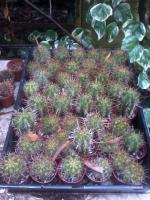
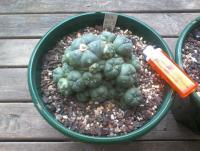
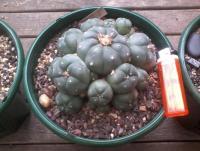
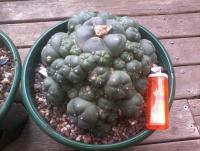
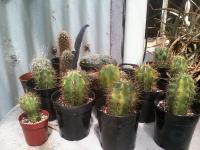
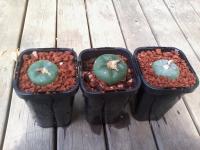
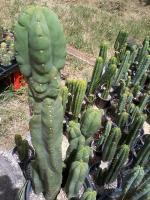
tips for dealing with variegated cacti
in Cacti & Succulents
Posted
If it is an offset off a non-variegated mature plant leave it on, I've taken cuttings before only to have them grow out very quickly, so frustrating. I find seedlings generally stay true when kept in good light.